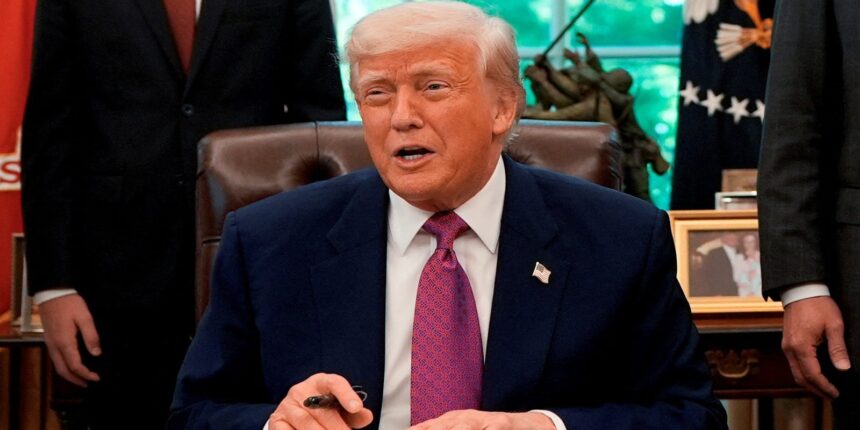Walmart’s recent public statement challenging the feasibility of President-elect Donald Trump’s aggressive tariff proposals has ignited a firestorm of controversy across political and business circles. The retail giant, which serves nearly 90% of American consumers annually, warns that the proposed 60% tariff on Chinese goods would devastate household budgets already stretched thin by persistent inflation.
“The American consumer cannot bear the brunt of these tariffs,” said Walmart CEO Doug McMillon during the company’s quarterly earnings call. “We’re looking at potential price increases of 15-20% on thousands of everyday essentials if these tariffs are implemented as proposed.”
The statement represents an unusual political stance for the nation’s largest retailer, which typically maintains a careful neutrality on partisan issues. However, with over 4,600 U.S. stores and a supply chain deeply intertwined with Chinese manufacturing, Walmart executives argue they’re simply stating economic reality rather than taking sides.
Trump’s transition team wasted no time responding to what they characterized as “corporate resistance” to the America First agenda. In a statement released via Truth Social, Trump wrote: “Walmart should focus on bringing manufacturing back to America instead of defending Chinese interests. The tariffs will help rebuild American manufacturing, and smart companies will adjust.”
Economic analysts remain divided on the ultimate impact. According to research from the Peterson Institute for International Economics, the proposed tariff structure could cost the average American household an additional $2,400 annually in higher prices for everyday goods. However, proponents of the tariff policy point to potential long-term benefits if manufacturing returns to American soil.
“We’re seeing an unprecedented collision between corporate America and the incoming administration,” notes Dr. Eleanor Simmons, professor of international trade at Georgetown University. “Retailers like Walmart are essentially saying they cannot restructure their entire supply chain in the short timeframe the Trump team envisions without significant consumer pain.”
The dispute highlights the complex reality of global supply chains that have evolved over decades. While CO24 Business reporting indicates many companies began diversifying away from China during the first Trump administration and continuing through the pandemic, completely unwinding these relationships would require years, not months.
Small business advocacy groups have also joined the conversation, with the National Federation of Independent Business expressing concern that smaller retailers lack the negotiating power of giants like Walmart and would face even more severe consequences from steep tariffs.
“The largest retailers might absorb some costs or strong-arm suppliers, but your local shops will have no choice but to pass 100% of these increases to customers or close their doors,” said Marcus Hamilton, NFIB spokesperson.
Consumer advocacy groups point out that the products most likely to see price increases are household necessities—clothing, shoes, electronics, appliances, and furniture—items that CO24 News coverage shows have already experienced significant inflation over the past three years.
As the transition period continues, attention now turns to whether other major retailers will follow Walmart’s lead in publicly challenging the incoming administration’s trade policies. Target, Home Depot, and Costco have thus far remained more circumspect, though industry analysts suggest they share Walmart’s concerns privately.
The showdown raises fundamental questions about America’s economic future: Can manufacturing return at scale without significant consumer pain in the interim? And as global trade tensions escalate, what price are American families ultimately willing to pay for economic nationalism? The answers will shape not just corporate strategy but household budgets for years to come.











